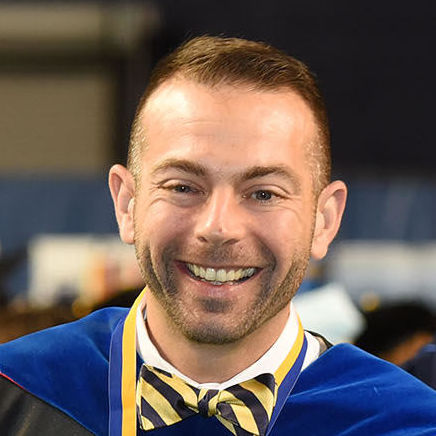Results Are In
When it comes to the POGIL method, Patrick Brown, assistant professor of Health Sciences at Eastern Tennessee State University, has a home advantage: his wife is a chemist.
“Before taking a POGIL workshop, she was teaching an intro chem class for non-majors getting great student reviews," recalls Brown. "But when she gave them the final exam, they did horribly on it.”
“There was this disconnect between what they thought they were learning, and what they were actually learning,” he adds.
After seeing how POGIL transformed student learning in his wife's classroom, Brown jumped at the chance to take a workshop himself. He hoped the method might help him solve similar problems with student learning in his anatomy and physiology classroom.
“I went home and in three weeks wrote my first few POGIL activities,” says Brown, who still spends plenty of time writing activities and experimenting in his classroom.
After years of collecting data, Brown is convinced that the POGIL method benefits his students .
“By 2010, I had enough POGIL implementation semesters under my belt that I felt confident that the results I was seeing were real,” Brown explains. He went on to publish his findings in an article for Advances in Physiology Education, in addition to collecting activities into an A&P textbook for POGIL.
Now, says Brown, he’s working on integrating POGIL with case-based learning, or using case studies to help students learn about medical diagnoses. In his upper-level college course on parasitic disease, students receive case documentation about a patient. Brown then asks questions that guide students to make diagnoses or design public health interventions.
“It’s not straight case-based learning, and it’s not straight POGIL,” says Brown. “It’s a mash-up of both.” This innovation helped earned Brown POGIL’s prestigious PEACH Award for significant and enthusiastic contributions in teaching.
In addition to his excitement about the method, which he calls an “introduction to active learning, [and] small-group application,” Brown is dedicated to helping other college educators better understand their students’ needs.
“I encourage people to go to POGIL workshops,” Brown says. “Even if they’re not going to use POGIL, they’ll use what they learn about how people learn, and how best to take what we know about how people learn and improve their classroom practice.”
“I think that’s a real strength of the project as a whole,” he adds. “POGIL is focused on making educators better educators.”

The Results Are In
“By 2010, I had enough POGIL implementation semesters under my belt that I felt confident that the results I was seeing were real” -Patrick Brown, assistant professor of Health Sciences at Eastern Tennessee State University